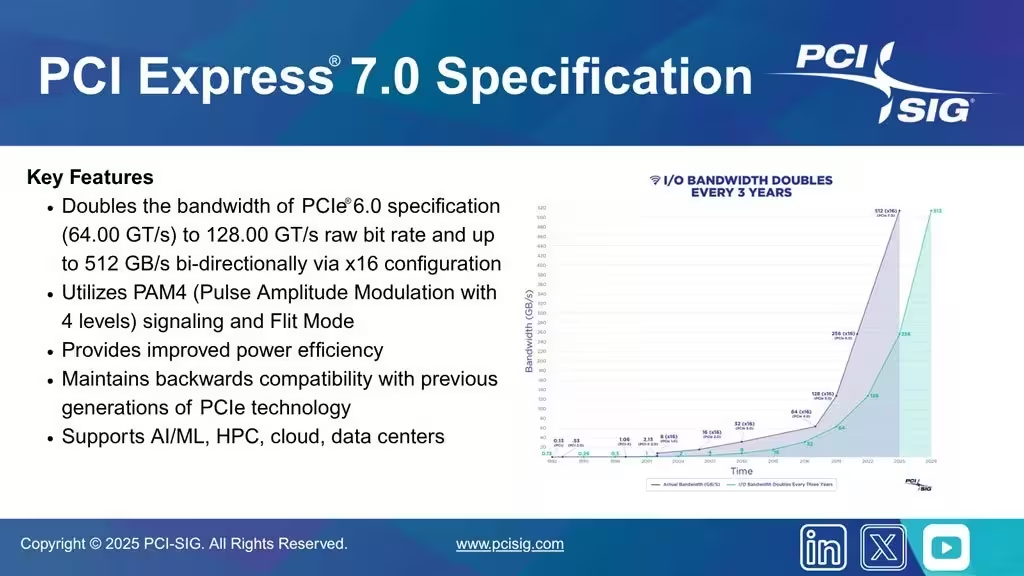3 Minutes
PCIe 7.0 Ushers in a New Era of High-Speed Connectivity
The PCI Special Interest Group (PCI-SIG) has officially unveiled PCI Express (PCIe) 7.0, the latest evolution of the industry’s leading high-speed data transfer standard. PCIe 7.0 boasts a remarkable theoretical bandwidth of up to 512 GB/s when utilizing a full x16 lane configuration, doubling the maximum speed previously achieved by PCIe 6.0. Although this new standard is set to redefine what’s possible in data transfer speeds for computers and enterprise hardware, it will be some time before consumers see PCIe 7.0-enabled products on the market.
Key Features and Specifications of PCIe 7.0
Massive Speed Improvements
Staying true to its pattern of innovation, PCI-SIG has once again doubled PCIe’s data rate—now reaching 128 GT/s (Gigatransfers per second), up from 64 GT/s in PCIe 6.0. Like prior generations, PCIe 7.0 maintains support for up to 16 data lanes (x16), but the monumental leap in bandwidth significantly outpaces previous standards, setting a new benchmark for superfast, low-latency communication across the computing industry.

Enhanced Performance, Low Latency
Thanks to its simultaneous bidirectional data lanes, PCIe 7.0 enables faster, more efficient connections between a system’s motherboard and various high-performance components—such as graphics cards, SSDs, and AI accelerators. PCI-SIG’s commitment to doubling performance every three years has allowed the PCIe ecosystem to keep pace with modern computing demands, especially as AI, cloud services, and data-intensive industrial applications surge in popularity.
Comparison with Previous PCIe Generations
While many users are still awaiting widespread PCIe 6.0 adoption, PCIe 7.0 again raises the bar—for both speed and scalability. For reference: PCIe 3.0 offered up to 32 GB/s, PCIe 4.0 hit 64 GB/s, PCIe 5.0 jumped to 128 GB/s, and PCIe 6.0 doubled that to 256 GB/s. Now, PCIe 7.0’s 512 GB/s bandwidth stands as the ultimate choice for bandwidth-hungry sectors.
Advantages and Potential Applications
The breakthrough speeds and efficiency of PCIe 7.0 are poised to benefit industries requiring colossal bandwidth and minimal latency. This includes artificial intelligence and machine learning infrastructures, data centers, aerospace, automotive technologies, and defense systems. As these sectors push for faster, more reliable data transport, PCIe 7.0 emerges as a critical enabler for next-generation computing innovation.
Market Outlook and Availability
Despite its impressive capabilities, broad adoption of PCIe 7.0 in consumer devices like desktops and laptops is still years away. Most current high-end systems utilize PCIe 5.0, with PCIe 6.0 just beginning to debut in select enterprise products. Mass adoption will depend on advancements in processor and memory technologies that can fully leverage PCIe 7.0’s extraordinary throughput.
For now, only select enterprises and organizations with cutting-edge performance requirements will experience PCIe 7.0. However, as the digital landscape continues to evolve and demand for high-speed connectivity grows, PCIe 7.0 will play a pivotal role in the future of computing hardware.
Source: theverge



Comments